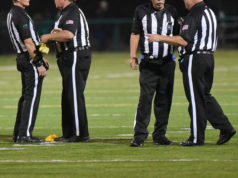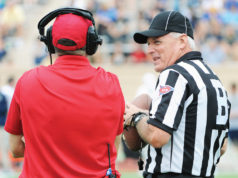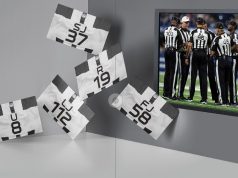Have you ever heard that phrase “Was it something I said or the way I said it?” How we say something is as important as what we are saying. Good communications skills are vital in officiating.
One of the keys to good communications skills is the ability to listen. Officials must hear what is being said and how it is being said. Once that skill is honed, it is important to be able to articulate clearly and succinctly when communicating with coaches and players.
Since the participants have a tendency to be excited, they also tend to speak quickly and loudly. Be calm and speak in a composed manner. Lower the volume. You will be amazed at the reactions you’ll get in return.
Remember the importance of what you say and how you say it. Let the coach know you aren’t ignoring him. Explain why something was or was not a foul. “There may have been holding on that play, but it was not at the point of attack,” is information, not an argument. Coaches want to be heard.
Reporting fouls to coaches of both teams is important. The coach of the offending team may not always like what is being said, but it is important to convey in a calm way the foul and the penalty. “There was pass interference on your number 22. The 15-yard penalty will be enforced from the previous spot.” That sort of communication gives the wing official an opportunity to establish credibility with the coach and provide more of a comfort level for the officiating crew.
Never say, “That was not my call.” Coaches believe officials should call anything anywhere on the field. Say instead, “I had different coverage responsibilities on that play, Coach. I can ask the covering official what he saw if you like.”
The referee is the face and voice of the crew when it comes to administering the game and enforcing the penalties. Signaling (and use of the microphone when applicable) gives the referee an opportunity to find out what happened on the play. All enforcements should be verbalized, even when the referee is not using a microphone.
Communication among the crew can be verbal or non-verbal such as a nod or hand movement. Scoring plays in the vicinity of the goalline and sideline present opportunities for the wing officials and the back judge to communicate both ways if necessary prior to making a final ruling. Watching officials using those communication tools is a nuance only appreciated by someone who understands the mechanics of officiating. In each case, it helps the officials make the right call.
Good communication skills can be acquired by practicing some simple principles. Listen carefully to what is being said and how it is being said. Remain calm in hectic circumstances. Respond in a thoughtful meaningful way. Always take the high road. Remain professional.
Put another way, practice the three C’s: Stay cool, calm and collected.
What's Your Call? Leave a Comment:
Note: This article is archival in nature. Rules, interpretations, mechanics, philosophies and other information may or may not be correct for the current year.
This article is the copyright of ©Referee Enterprises, Inc., and may not be republished in whole or in part online, in print or in any capacity without expressed written permission from Referee. The article is made available for educational use by individuals.


















